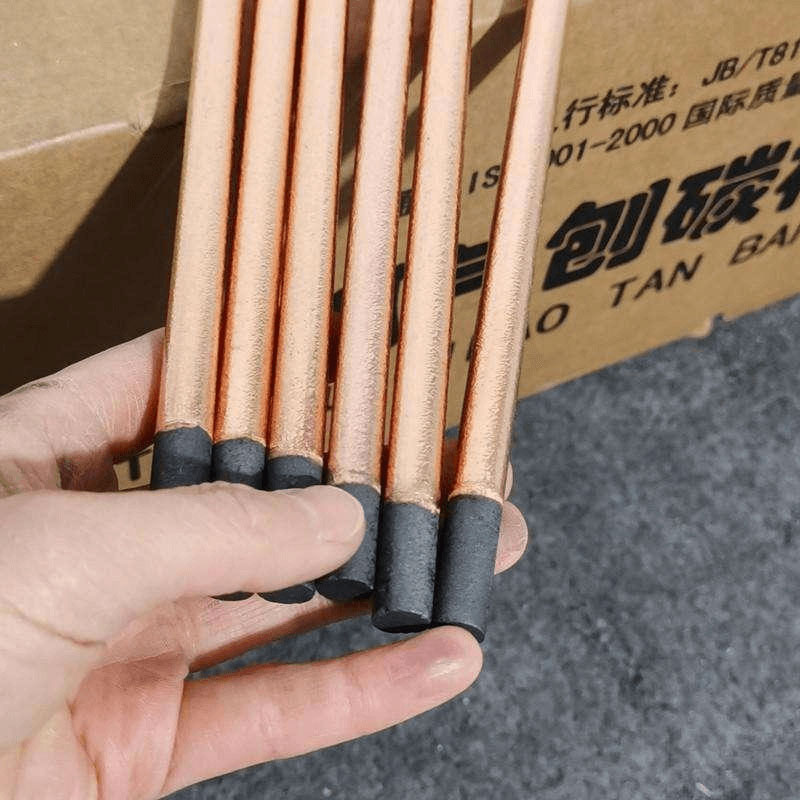Gouging Electrode
A carbon rod, also known as a carbon electrode, is a cylindrical piece of carbon material used in various applications. It is made from high-quality carbon and is known for its excellent electrical conductivity and heat resistance. Carbon rods are widely used in industries such as metallurgy, chemistry, and electronics.
One of the most common applications of carbon rods is in the field of metallurgy. They are used in electric arc furnaces for the production of steel and other metals. Carbon rods act as electrodes, carrying a high electric current that generates intense heat. This heat is essential for melting the raw materials and forming molten metal. The carbon rods also play a crucial role in the purification process by removing impurities and refining the metals.
In the chemical industry, carbon rods find applications in electrolysis processes. Electrolysis is a technique used to separate compounds into their constituent elements using an electric current. Carbon rods serve as electrodes in electrolytic cells, facilitating the flow of electric current and enabling the desired chemical reactions. They are commonly used in the production of chlorine, sodium hydroxide, and various other chemicals.
Carbon rods are also widely used in the field of electronics. They are an essential component in batteries, particularly in zinc-carbon and alkaline batteries. Carbon rods act as the negative electrode, allowing the flow of electrons during the battery’s discharge process. Their high electrical conductivity ensures efficient energy transfer, making them ideal for powering various portable electronic devices.
Aside from their industrial applications, carbon rods also have uses in scientific research and education. They are commonly used in laboratories for experiments that require high temperatures and controlled electrical conductivity. Carbon rods can be used to study electrical resistance, heat transfer, and various chemical reactions.
Carbon rod classification
Round carbon rod: mainly used for root cleaning of welds, back grooving and removal of welding defects;
Rectangular carbon rod: used for removing temporary weld beads and weld scars remaining on components, removing weld reinforcements and carbon arc cutting;
Connected carbon rods: suitable for automatic or manual welding guns. Continuous feeding can reduce the loss of residual carbon rods during use. The grooves have high precision, smoothness and uniformity, good stability and high efficiency.
Instructions for use
- The carbon rod must be kept dry and must be dried before use when it gets wet.
- When used in DC power supply, the carbon rod is connected to the positive pole of the power supply and the working pole is connected to the negative pole.
- The compressed air pressure should be maintained at 0.5-1.6MPa.
- The arc distance between the carbon rod and the workpiece is about 3mm, and the exposure of the carbon rod to the fixture is about 100mm.
- The carbon rod forms an angle of 45° with the workpiece, and is planed along the tangential (or straight) direction.
- Carbon rods must be well ventilated when used. Operate according to working current.
In conclusion, carbon rods are versatile and essential materials used in a wide range of industries and scientific fields. Their excellent electrical conductivity, heat resistance, and durability make them indispensable in metallurgy, chemistry, electronics, and research. With their numerous applications, carbon rods play a vital role in advancing technology and improving various industrial processes.


